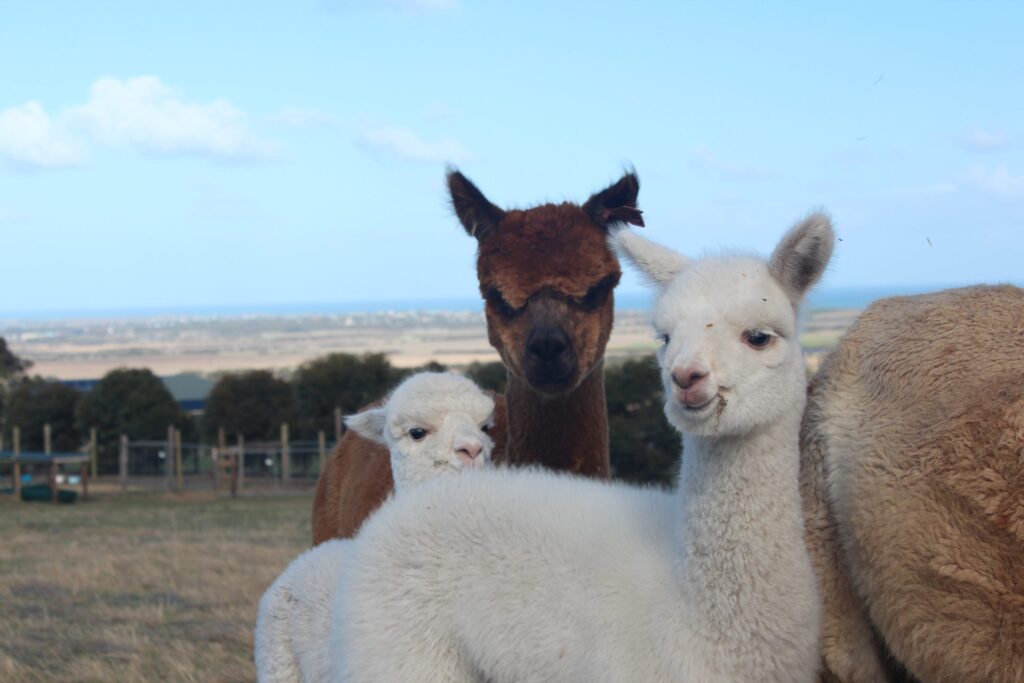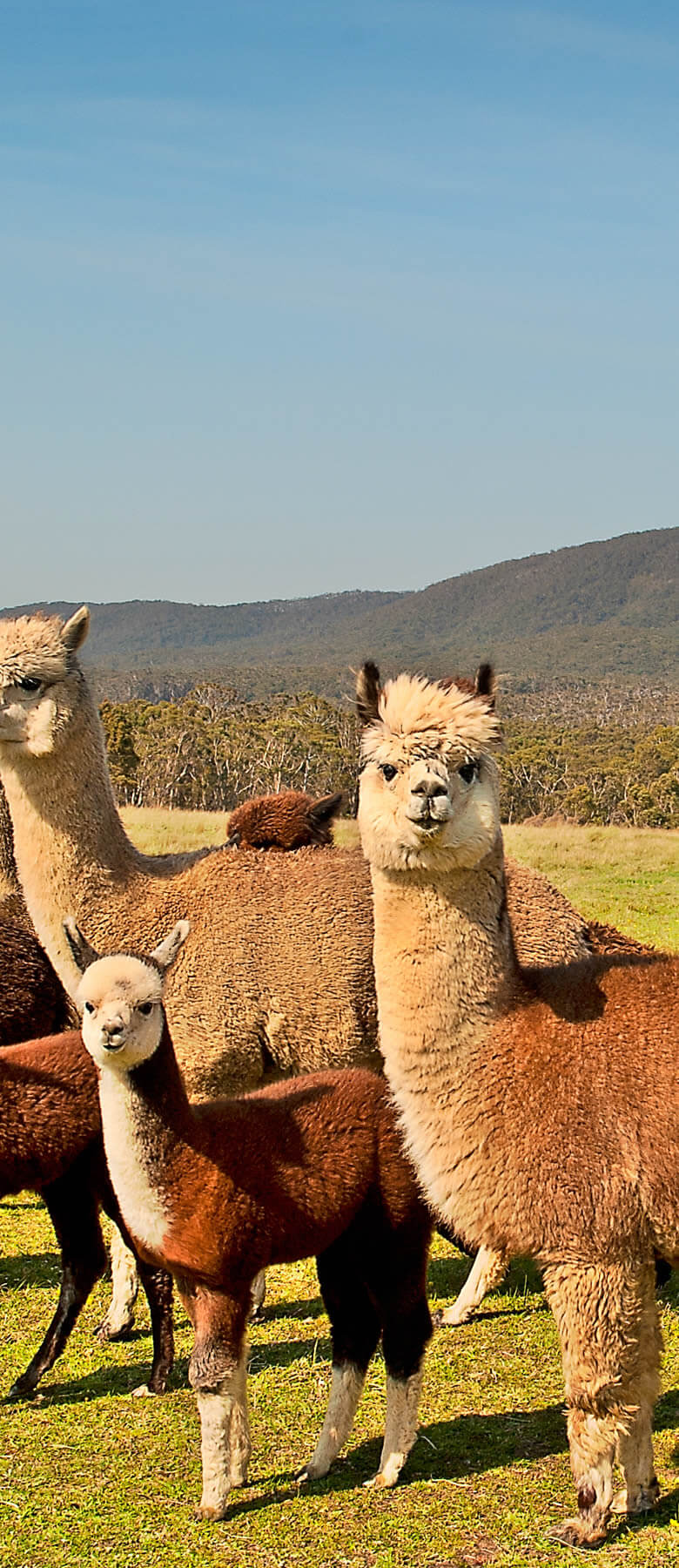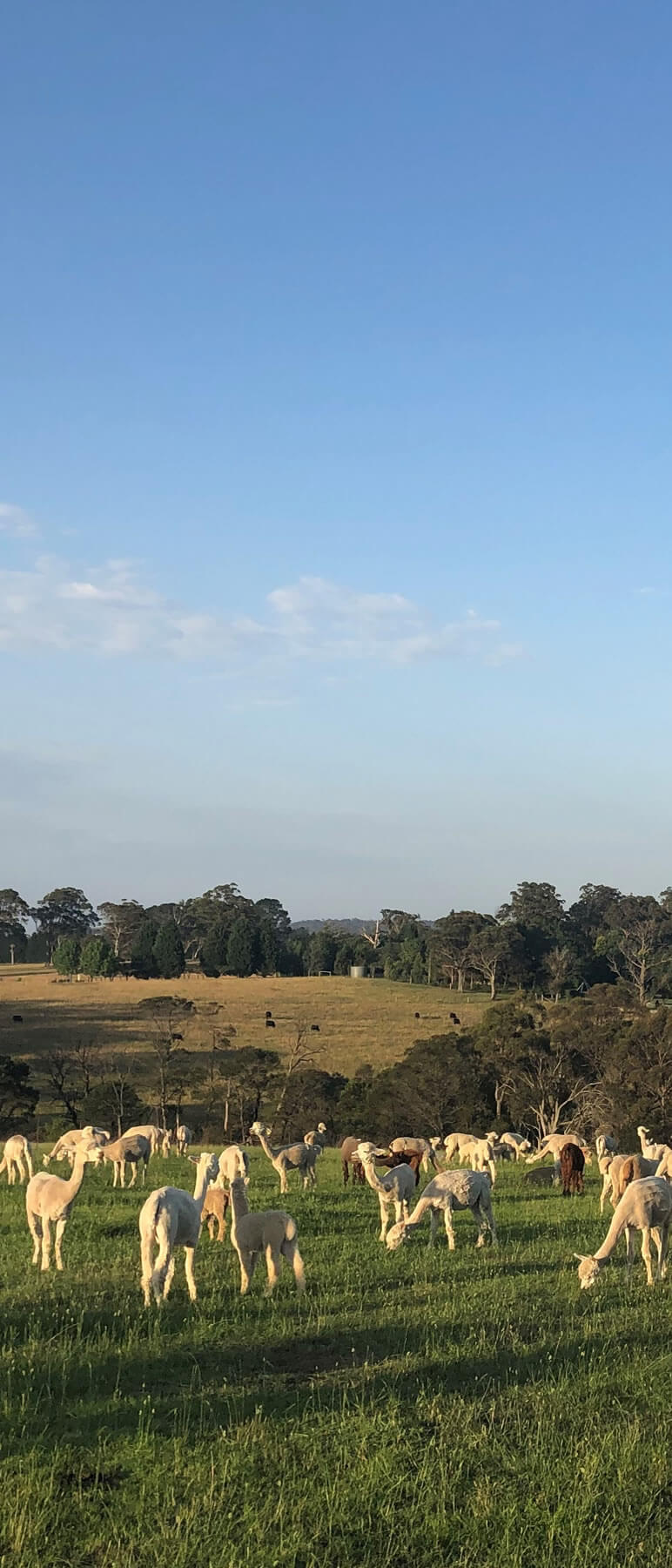Biosecurity
All alpaca growers, from commercial operators, to showing enthusiasts, to people starting with their first few alpacas, or other species producers with alpacas as herd guardians form part of the alpaca industry. Each and every grower has a role to play in protecting alpacas from established and exotic pests.
Incorporating recommended biosecurity processes into day-to-day operations is the best way to protect individual growers, regional biosecurity and the Australian alpaca industry as a whole.
Biosecurity is the protection of livelihoods, lifestyles, and the natural environment, all of which could be harmed by the introduction of new diseases, or through the impact of diseases already established in Australia.
Biosecurity is a national priority, implemented off-shore, at the border, or on-farm. Biosecurity is essential for a successful Alpaca business.
Australia’s geographic isolation has meant that we have relatively few of the diseases that affect livestock industries overseas. Freedom from these exotic diseases is a vital part of the future profitability and sustainability of Australia’s alpaca industry. Biosecurity preserves existing trade opportunities and supports new market negotiations.
Alpaca farm biosecurity is a set of measures designed to protect a farm from the entry and spread of disease and pests. Biosecurity is the responsibility of every alpaca grower and every person visiting or working on an alpaca farm.
No matter what the purpose of your alpacas or how many you have, it’s necessary that you practice best on-farm biosecurity and animal health and welfare to safeguard your herd, and the entire alpaca industry from biosecurity threats and diseases.
Through implementing on-farm biosecurity practices in your alpaca herd, you’ll protect the health of your livestock, limit production losses and help maintain market access for Australia’s alpaca producers. Early detection and immediate reporting increases the chance of an effective and efficient eradication.

Recommended biosecurity for alpaca owners
The recommended on-farm biosecurity practices for alpaca owners can be found in the National Biosecurity Reference Manual: Grazing Livestock Production.
This manual provides a set of voluntary, cost-effective guidelines to help reduce the risk of disease entering a property, spreading through the livestock population, and/or being passed to surrounding livestock operations. It outlines recommended measures under five management areas: Livestock; People, equipment and vehicles; Feed and water; Pests and weeds; Management.
The industry’s biosecurity plan
Farm biosecurity plan
If you’re just starting out in the industry or you’ve been around for a while but haven’t paid much attention to the concept of biosecurity, you should download an on-farm biosecurity template and start taking steps to protect your herd and property.
A farm biosecurity plan contains all the measures required to help mitigate the risk of disease entry and spread. The farm biosecurity plan should complement the practices outlined in the National Biosecurity Reference Manual: Grazing Livestock Production.
Biosecurity plans do not need to be lodged with any particular authority, just keep it safe, easily accessible and ensure you regularly re-visit to ensure the practices are relevant to your production and make sure that any staff you have on the property are aware of your plan’s details.
Get started with protecting or enhancing your property
You can also download a Farm Biosecurity Action Planner which will walk you through assessing risks for your property and building in quick and simple measures to help protect your property.
Alpaca CheQA
In 2021 a review of the QAlpaca program saw the development of Alpaca CheQA. This was a combination of several different initiatives both within and external to the AAA. Specifically it included assistance from Animal Health Australia, Dr Jane Vaughan, Dr Richard Shephard, the AAA Board and working party.
In the future this program will align well with the Sustainability Framework with educational modules available to members to complete micro-credentials to distinguish them from their peers and further demonstrate their higher level of knowledge and understanding.
Biosecurity is a major risk for our members and our industry at large. With a decreasing uptake to Qalpaca and with Alpaca MAP closing, it has been considered that a new biosecurity program, Alpaca CheQA, was likely be suited to the members needs. It has been launched in July 2022 after member testing and consultation.
There is initially one module of Alpaca CheQA available, with further levels in development. The baseline module of Alpaca CheQA is available to all members at no cost, with no audit. Simple to follow questionnaire, including links for more information and “how-to” references. Priority with this module is to increase participation in biosecurity program use amongst our membership & reduce the overall risk to industry.
The intention is for this annual statement to be checked by the AAA and if the minimum benchmark is met then the alpaca farm would be considered “assessed” and an Alpaca CheQA number will be issued.
Existing QAlpaca members that complete the Alpaca CheQA annually will keep their original QAlpaca number or have it transferred to the new program.
There is a strong focus within the Alpaca CheQA program on record keeping and isolation periods. All Alpaca CheQA farms will be considered assessed for AAA shows and remain isolated from non assessed farms.
For more information or to discuss the process for Alpaca CheQA, please contact brett@alpaca.asn.au or Tanya@alpaca.asn.au
Alpaca CheQA link:
Alpaca CheQa Farm Protect Form
Rules and Guidelines for Alpaca CheQA program
Transporting alpacas
It is recommended that you check state transport regulations when moving livestock across borders and ensure that the animals welfare is being looked after.
Get in touch with the relevant state or territory agriculture department and for further information on land transport of alpacas, read the Land Transport Standards and Guidelines.
Owners planning to move alpacas interstate should check the destination state’s entry requirements well in advance of moving the animals. Testing or further certification may be required. AAA recommends using the South-American-Camelid-Declaration-Waybill_2022_Fillable For further information contact the relevant State or Territory department of agriculture or primary industries. State entry requirements can also be found on the Farm Biosecurity website
When traveling to a show, producers should also carry a herd health declaration for shows
NATIONAL SOUTH AMERICAN CAMELID DECLARATION AND WAYBILL
Related links:
- Farm biosecurity
- NLIS
- Bovine Johne’s disease
- Livestock Production Assurance Program
- Rules and Guidelines for Alpaca CheQA program v2.0
- Alpaca CheQa Farm Protect Form


